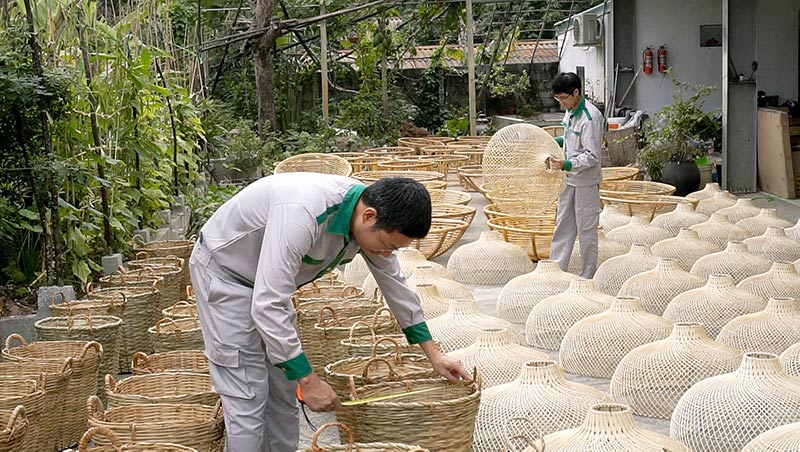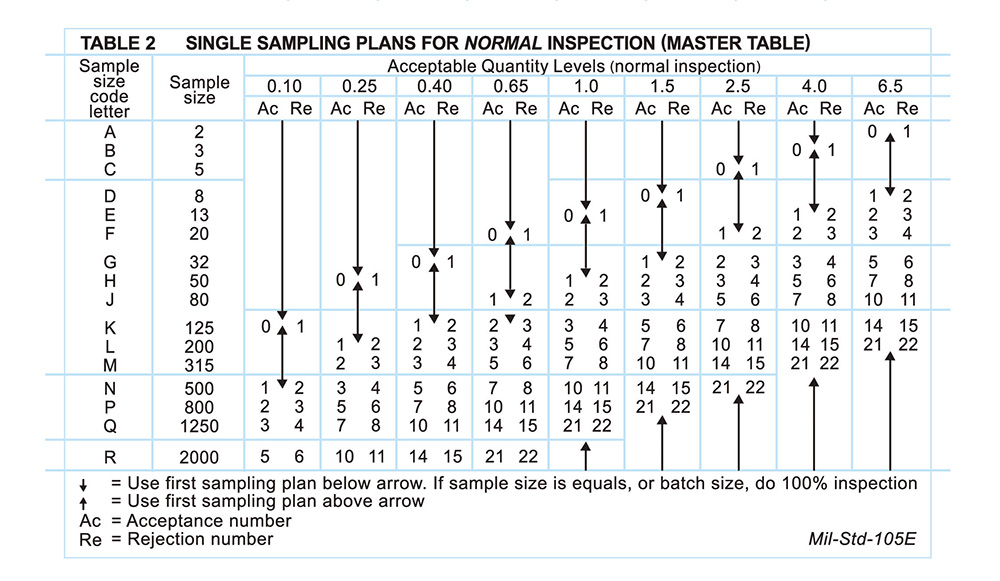The majority of wholesale home decor and furniture companies and home accessories retailers are familiar with the term “AQL”. Particularly, most retailers utilize AQL 2.5 extensively in purchase orders and AQL inspections. However, what does AQL stand for and how is it determined? Let’s join our following insights to explore more.

What is AQL?
AQL stands for Acceptance Quality Limit. It refers to the maximum number of defects in a batch that customers and wholesale furniture suppliers have agreed upon.
AQL sampling and AQL inspection help both parties to assure quality before the shipping departure. Hence, it could eliminate the risks of defective goods prior to shipment. In other words, to maintain a specific level of product quality, AQL should be performed before customers (e.g. garden furniture retailers) officially accept the goods and start importing goods from exporters (e.g. Vietnam furniture home goods wholesalers).
Is AQL crucial in the quality inspection of wholesale furniture home goods?
The answer is yes, a definite yes. An AQL standard allows both parties to make sure the right number of sampling product units to check. Both parties will be clear that the whole order is rejected if the defects exceed the AQL inspection sample.

When it comes to wholesale home decor and furniture, it might be difficult for manufacturers to inspect a large number of items simultaneously. Therefore, adding the AQL method (such as AQL 2.5) can be beneficial for both wholesale furniture suppliers and retailers.
When exporters are done with an AQL inspection, the agency will give exporters a shipment certificate that says whether or not they passed.
3 types of AQL in Garden Furniture
Home decor and furniture importers may have the right to establish several AQLs, such as critical, major, and minor defects (Source).
- AQL 0 – Critical defects (0%): Unacceptable, the defects could be harmful to users.
- AQL 2.5 – Major defects (2.5%): Unacceptable by the end-users, usually with consumer goods.
- AQL 4 – Minor defects (4%): Acceptable, the goods fail to meet specifications.
In general, the amount of accepted defective goods is determined by the level of risk agreed upon by the supplier and buyer.
Guideline to read an AQL chart
An AQL chart is a tool that can be used to figure out how big an inspection sample should be and how many defective units are acceptable. The AQL chart also gives you more choices, such as different levels of inspection and standards for special cases.

(Source: Insight Quality Services)
For detailed explanations of the AQL chart and AQL calculating, please refer to the following video
(Source: HQTS Group)
Conclusion
For any retailers working in the industry, it is essential to get insights into the inspection, product assurance, and delivery procedures. Simple Decor hopes that the article is workable for you. If you are interested in made-in-Vietnam wholesale home decor and furniture, we provide 4 Ways to Find Vietnamese Home Decor Manufacturers.
Explore more: Delivery Process with Home Decor Wholesale Vendors from Vietnam.
We are willing to be your business partner and together we grow our business. No matter what your idea is, Simple Decor is sure we can bring them to reality as a stepping stone for mutual success. Check out more about how we can solve your differentiation tactics here. You can also leave us a message and we will get back to you at a moment’s notice.

Newest Blog
Ha Nam: The Source of the Inspiring Journey of Simple Decor 🌿
Jul
The Complete Creation of a Plant Basket Made from Recycled Materials
Jun
Embrace Nature’s Glow by Coconut Husk Candle Holders
Mar
A day of Shared insights and Collaborative opportunities with Oklahoma University’s MBA cohort
Jan
Prime Minister of the Netherlands, Sustainability, the Vietnam-Netherlands Connection and Meeting with Simple Decor
Nov
Commitment to Support the Local Artisans at Simple Decor
Oct
The Art of Coconut Bowl Production: From Nature to Tabletop
Aug
Empowering Women at Simple Decor: A meeting with the Director-General of the World Trade Organization (WTO)
Jun